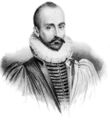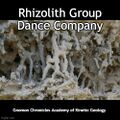Template:Selected anniversaries/February 28: Difference between revisions
Jump to navigation
Jump to search
No edit summary |
No edit summary |
||
| (22 intermediate revisions by the same user not shown) | |||
| Line 1: | Line 1: | ||
<gallery> | <gallery> | ||
File:Michel de Montaigne.jpg|link=Michel de Montaigne (nonfiction)|1533: Philosopher and author [[Michel de Montaigne (nonfiction)|Michel de Montaigne]] born. He will be one of the most significant philosophers of the French Renaissance, known for popularizing the essay as a literary genre. | File:Michel de Montaigne.jpg|link=Michel de Montaigne (nonfiction)|1533: Philosopher and author [[Michel de Montaigne (nonfiction)|Michel de Montaigne]] born. He will be one of the most significant philosophers of the French Renaissance, known for popularizing the essay as a literary genre. | ||
File:Jost Bürgi.jpg|link=Jost Bürgi (nonfiction)|1552: Clockmaker and mathematician [[Jost Bürgi (nonfiction)|Jost Bürgi]] born. He will be recognized during his own lifetime as one of the most excellent mechanical engineers of his generation. | File:Jost Bürgi.jpg|link=Jost Bürgi (nonfiction)|1552: Clockmaker and mathematician [[Jost Bürgi (nonfiction)|Jost Bürgi]] born. He will be recognized during his own lifetime as one of the most excellent mechanical engineers of his generation. | ||
File:Linus Pauling.jpg|link=Linus Pauling (nonfiction)|1901: Chemist, biochemist, peace activist, author, and educator [[Linus Pauling (nonfiction)|Linus Pauling]] born. | File:Linus Pauling.jpg|link=Linus Pauling (nonfiction)|1901: Chemist, biochemist, peace activist, author, and educator [[Linus Pauling (nonfiction)|Linus Pauling]] born. | ||
File:Rhizolith Group.jpg|link=Rhizolith Group|1967: Modern dance geology company '''[[Rhizolith Group]]''' debuts a new work, "Coriolis Force and Particulate Deposit Patterns in Paleoglacial Sedimentary Deposits". | |||
File: | |||
</gallery> | </gallery> | ||
Latest revision as of 13:41, 28 February 2022
1533: Philosopher and author Michel de Montaigne born. He will be one of the most significant philosophers of the French Renaissance, known for popularizing the essay as a literary genre.
1552: Clockmaker and mathematician Jost Bürgi born. He will be recognized during his own lifetime as one of the most excellent mechanical engineers of his generation.
1901: Chemist, biochemist, peace activist, author, and educator Linus Pauling born.
1967: Modern dance geology company Rhizolith Group debuts a new work, "Coriolis Force and Particulate Deposit Patterns in Paleoglacial Sedimentary Deposits".



